Category Qualification vs Product Qualification
When you are prospecting for new leads are you looking for
prospects that want to buy a product or service that is like yours? Or, are you
searching for prospects that need exactly what you have to sell? These are two
very distinct approaches to business development and yield two very different
sets of prospects. And results.
Category Qualification vs Product Qualification
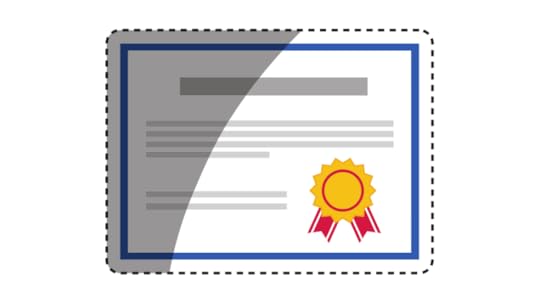
The default for most salespeople is to approach qualification
from the perspective of qualifying the prospect to buy a product/service that
is like theirs, that is similar to theirs. They are qualifying their leads as
prospects for the category of product or service they are selling. This is
called category qualification.
If you pursue a category qualification approach then that means
you are more focused on a classic “sales is a numbers game” approach
to selling. ‘Let’s fill up the funnel and see how many pop out the bottom.’
This has been the primary method salespeople have used since the beginning of
the 20th century. I call it a brute force approach to sales that may yield some
results but is wasteful of the seller’s and prospect’s time.
The alternative to category qualification is product
qualification. A disciplined product qualification approach says that you are
prospecting for customers that need exactly what you have to offer. What is the
unique value(s) that your product/service/company provides to a customer? What
are the specific features/benefits/services that differentiate your products
from your competitor?
As a seller your task then becomes to find prospects whose key decision criteria precisely align with your unique value. This takes more work upfront. It also requires the self-discipline to “catch and release” prospects that don’t measure up to your qualification standards. But, just take a second and imagine what will happen to your sales if your pipeline is composed primarily of prospects that are qualified to buy your specific product or service as opposed to your category of product or service. Provided that you are a responsive seller, a zero-time seller, the result will be compressed buying cycles, improved sales productivity and more money in your pocket.
Pipeline Addiction
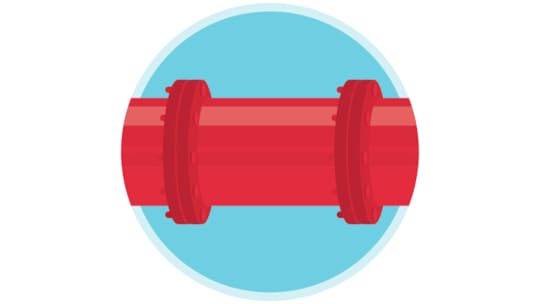
The reason that category qualification is still preferred by
salespeople is due to their, and their sales manager’s, unhealthy preoccupation
with the size of their pipeline. Unfortunately for too many sales managers the
size of a salesperson’s prospect pipeline is a lazy metric to assess. In
reality it doesn’t tell the manager anything about the likelihood of any of the
deals turning into an order. (Ironically, most sales managers will say it is
easier to forecast their numbers if their pipelines are robust when, in fact,
the are dissipating tremendous amounts of sales time with unqualified prospects
and creating greater uncertainty about their results.) Obviously it is easier
to fill a pipeline with “qualified prospects” if you are less
discriminating about the quality of those prospects. But this has a major
negative impact on the speed of your selling. It takes too much time to weed
out the prospects that are never going to buy from you. That time would be much
better spent upfront ensuring that the prospect is qualified to buy precisely
what you are selling.
Here are some tips you can employ to begin breaking your
dependence on category qualification, develop a truly productive pipeline and
speed your sales:
1. Re-qualify your current pipeline
Go through your current pipeline and re-qualify every prospect
according to a product qualification standard. Remember, that product
qualification is not about qualifying the prospect to buy a product that is
sort of like yours or somewhat like yours. It is about qualifying the lead as a
prospect to buy exactly what you are selling. This may seem like an onerous
task but the alternative is to continue spending more of your limited sales
time on prospects that are not going to not buy from you.
2. Be utterly realistic and
ruthless
If you believe that a prospect is strongly leaning towards
another solution then that means that you probably missed something in the
qualification stages. It may be that that they are qualified to buy your
competitor’s product but not yours. If that is the case, don’t cling to the
prospect. Not everyone will buy from you. Focus your time and energies on those
that will.
3. Get a head start on the
competition
Unless your product or service is identical to that being
offered by the competition, using product qualification means that you should
begin a qualified prospect’s buying process with a substantial head start on
your competition. This translates into shorter buying cycles and more sales
time to close more orders.
Surplus is at the Root of Discounting.
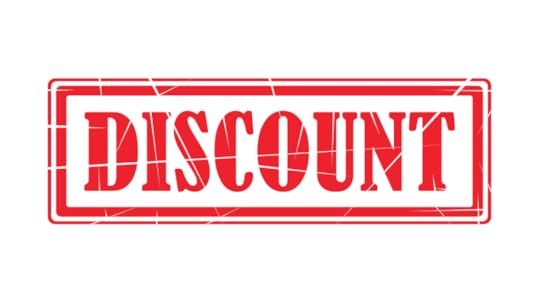
It is easy to blame the salespeople for rampant discounting but
it has always been my experience that the primary responsibility for
over-zealous discounting and the resulting price and margin erosion rests with
management.
When a manager has a surplus, whether of inventory or of
salespeople not hitting their numbers (meaning that he or she isn’t hitting
their number either), they look for a solution in the form of a discount.
Approach the end of the month or quarter with too much inventory on the shelves
or too many people not hitting their quota, and the first thing many managers
do is authorize their salespeople to offer a discount to a customer to win an
order and move some product.
All parties involved in a sales transaction, buyer and seller,
are familiar with this cause and effect scenario. Salespeople wait for it.
Customers wait for it. It is not an accident that the trajectory of orders
during a quarter traces the familiar hockey stick shape. Everyone is familiar
with the rules and is in on the game.
The problem with this end of period discounting is that these
“one-time” discounts have a tendency to morph into the new default
price point for your customer. If you’re handing out discounts at the end of a
quarter to induce customers to close an order or accelerate a delivery, then
your next order from that customer is going to be at the new price point you
established with the discount. Balk at that and you’ll find that all your orders
from customers will start to materialize around the end of your accounting
periods.
Surplus is also a key factor in discounting conducted by
salespeople. It occurs because salespeople oversell their product or service,
in effect offering more features than what the prospect needs to meet their
needs. This overselling occurs when salespeople are not adept at precisely
qualifying their prospect’s exact requirements. A salesperson can’t sell value
if they don’t understand the problem the customer is trying to solve. As a
consequence, they tend to sell the entire feature set of their product or
service in the hope of encompassing the prospect’s needs in the process.
When a salesperson’s offer exceeds the needs of the customer
they are left with the choice of reducing either the scope of their offer or
their price in an attempt to win the order. Offering surplus features that are
without value to the customer almost always leads to a discount.
As a manager, to effectively address this discounting problem
you need to develop a plan to reduce the surplus factors in your selling.
First, the answer for salespeople who oversell is ongoing in-depth product
training. Learning to sell value is next to impossible without a true
understanding of your product or service. A rule of thumb is that a salesperson
can’t effectively sell value if they don’t understand their product better than
the prospect. Does your training accomplish that?
The second surplus factor to manage is the end-of-quarter
discounting syndrome. This is a hard habit for management to break.
Unfortunately going cold-turkey is the only effective method to curtail the
practice. It could take one or two
challenging quarters to flush the temptation out of your system and re-train
your salespeople, prospects and customers. However, you will learn which
customers are buying your product for the value versus the discount. These are
the customers to focus on in the future.
Are you chasing a buck instead of disqualifying a
prospect?
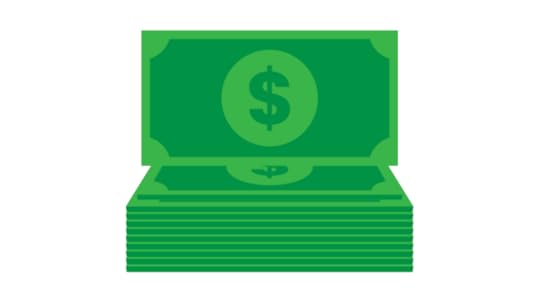
When a potential prospect tells you that your product is ‘too
expensive’ what they usually mean is that your product is just that, too
expensive for their budget. It isn’t an objection. It is a fact. Sometimes a
prospect just can’t afford what you are selling. Even if they are otherwise a
perfect fit for your product or service.
Unfortunately, salespeople are often too busy chasing a buck to
really listen to the customer. They desperately cling to these so-called
prospects, which really aren’t prospects, because they are loathe to kick any
potential buyer to the curb. But, as a consequence, they skip what should be an
essential early step in their sales process: qualifying the prospect on price.
Price Qualification
There is no mystery to price qualification. Qualifying a
prospect on price means that you reach a preliminary agreement about the value
that the prospect will receive from your product in exchange for the dollars
they are going to pay you. In other words, you have reached a tentative
agreement with the prospect that your price is proportional to their assessment
of your product’s value.
Unfortunately, salespeople have an unhealthy fear of the price
question. They want to keep it in a closet somewhere and forget about it. It
scares them. Like zombies or movies based on Jane Austen novels. They are
afraid that any discussion of price will scare off the prospect. Which is
exactly the point.
The downside to the salesperson of not qualifying, or
disqualifying, a prospect on price is the risk of wasting their limited and
valuable selling time on buyers who will not buy.
When
Should You Qualify on Price?
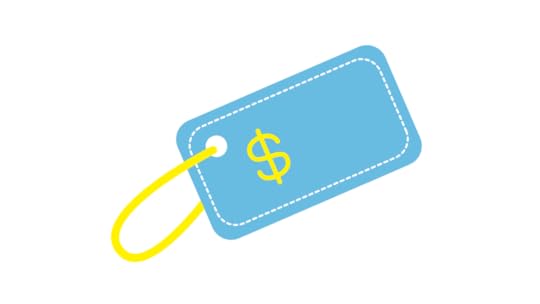
Price qualification’s rightful place is early in the sales
process, during the discovery and qualification phase, because a price
objection is a valid reason for you to disqualify a prospect. First, ask the
right questions of the prospect to fully understand their requirements and make
sure these are aligned with your value proposition (aka your features, benefits
and advantages.) Then clearly lay out the value, price and the ROI they can
expect from your solution based on their stated requirements. If you can’t
reach a preliminary agreement with the prospect on your “value for price” at
this stage, then you probably need to walk away.
Qualification on price and value doesn’t mean that your prospect
is 100% in love with your price. But it does mean they agree that you’re in the
ballpark and any further discussions of price will be a negotiation, not
handling an objection.
This begs then the central question: can you get a price
objection from a truly qualified prospect?
‘Dude,
that’s not a qualified prospect.’
A true price objection surfaced by your prospect at the end
stages of the sales cycle usually means one of two things: A) you misplaced
your backbone at the moment of truth and didn’t disqualify them when you had
the opportunity, or B) you didn’t fully disclose your price during
qualification. If it is A, then they were never a true prospect for your
product or service and you wasted your valuable sales time on someone who was
never going to buy from you. If the answer is B, then you misled the prospect
about your value proposition and it will be difficult to rebuild your
credibility with the prospect and win the order.
Finally, a warning. If you do a good job of qualifying the
prospect on price, but they keep pushing back on price while ostensibly still
moving forward with you in their buying process, then you should proceed with
caution. It is possible the buyer has a hidden agenda and is using you in order
to advance it. I remember one very large deal, early in my career, where the
prospect kept raising price objections even though I had carefully qualified
them. Unfortunately, I was inexperienced and made the mistake of responding to
these objections. I didn’t have the experience to understand that the prospect
was using me as a leverage point to negotiate a better deal with the
competition. It was a painful lesson learned.
Recently I received an email concerning a tele-seminar that was
to be held on the subject of the “dreaded price objection.” For 50 minutes, and
about the same number of dollars, I could learn how to find out “what people
really mean when they say you’re too expensive.” Really? That doesn’t require a
lot of translation.
It has been my experience that when a customer tells me that my
product is too expensive that what they usually mean is that my product is just
too expensive. It isn’t an objection. It is a fact. Sometimes a customer just
can’t afford what you are selling. Which
means that instead of investing your limited selling time in a fruitless
attempt to convince the customer to accept your price that you need develop
some new prospects that don’t have the same budgetary constraints. But let’s
get back to that in minute.
‘I really like your product but your price is too expensive.’
For instance, I recently stopped into a Bentley dealership. I really like the
Bentley Continental Supersports. Who wouldn’t want one? But it’s $260,000 price
tag has about three too many zeros for my checkbook. If the Bentley salesperson
thought that he was going to navigate the shoals of my price objection and
arrive at a signed purchase contract then he would have wasted a significant
amount of his limited time with me. In this case I never got the opportunity to
voice my ‘price objection’ because the salesperson took one look at the car I
drove up in and made himself scarce before I even walked in the door.
I have four simple rules of thumb about price objections and
price qualification that I have successfully taught to clients and salespeople
over the course of many years.
1. Qualifying a prospect on price means that you reach a rough
agreement with the prospect that your price is proportional to their assessment
of your solution’s (product or service) value. In other words, you have reached
a preliminary agreement about the value that the prospect will receive for the
dollars they are going to pay you. Qualification on price and value doesn’t
mean that a prospect is in love with your price. But it does mean you’re in the
ballpark and any further discussions of price will become a negotiation, not
handling an objection.
2. A price objection is a valid reason to disqualify a prospect
and must take place early in the sales process. A true price objection from
your prospect late in the sales cycle means that you misplaced your backbone at
the moment of truth and didn’t disqualify them when you had the opportunity.
They were never a true prospect for your product or service and you just wasted
a lot of time with someone who was never going to buy from you.
3. Be direct with the prospect about your pricing. Salespeople
have developed an unhealthy fear of the price question. They want to put it in
a closet somewhere and forget about it. It scares them. Like zombies or movies
based on Jane Austen novels. There is no mystery to qualifying on price. The
shortest distance between two points is a straight line. Do what you do best.
Ask the right questions of the customer to understand their requirements and
make sure they are aligned with your features and specs. And then talk price and value based on their
requirements.
4. You can’t have a price objection from a truly qualified
prospect. As discussed in #1 above, an intrinsic part of prospect qualification
is a rough agreement on price and value. If the prospect is still pushing back
on price but wants to move forward with you in their buying process then you
should beware. It is possible the buyer has a hidden agenda and is using you in
order to advance it. I remember one very large deal I worked on where the
prospect kept my company in the deal even though they kept whining about our
price. We were confident in our solution so we constructively responded to his
pricing concerns. But then it reached a point where it became obvious that he
was just using us as a leverage point to negotiate a better deal with our
competition. It was a painful lesson learned.
The post Category Qualification vs Product Qualification appeared first on Andy Paul.
Andy Paul's Blog
- Andy Paul's profile
- 4 followers



